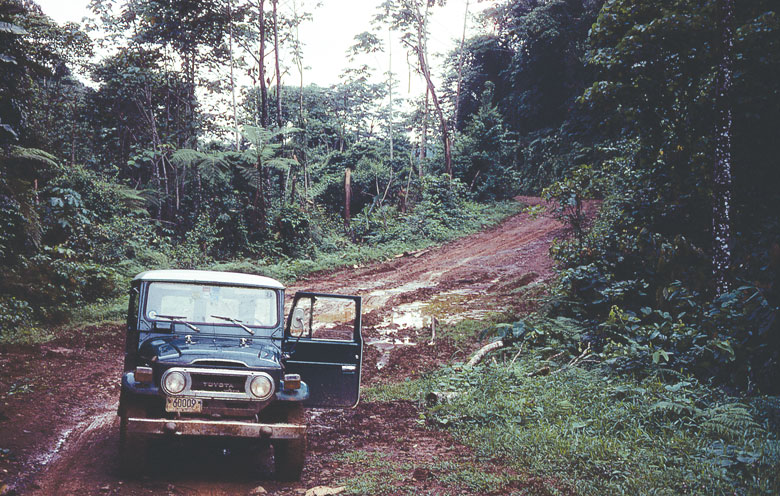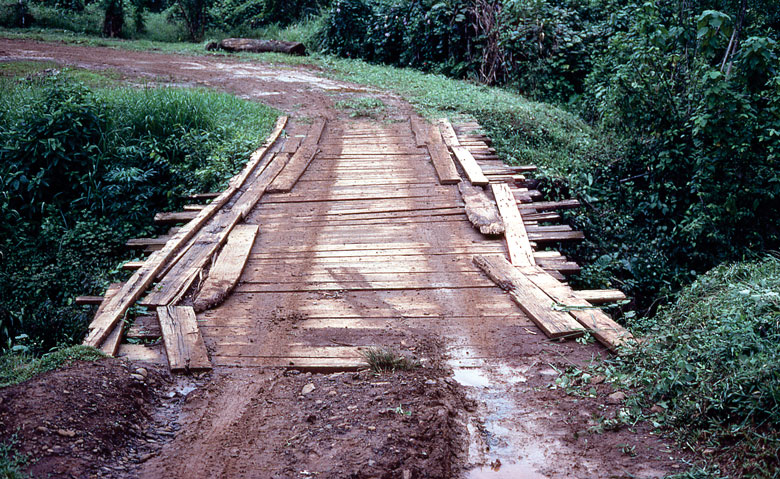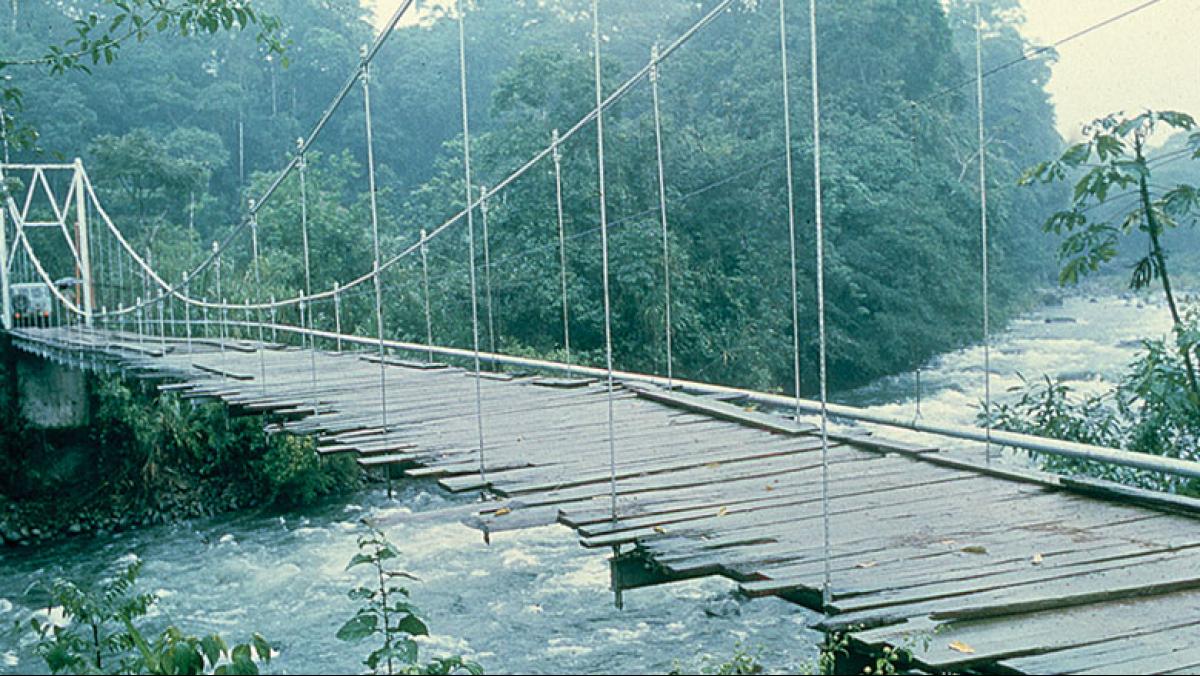While the phrase scientific research often conjures images of technicians in white coats holding glass tubes, a sizable slice of the scientific endeavor actually takes place outside of the lab in what is known as “the field.” Field research can be a powerful tool for expanding human knowledge and understanding, yet few non-scientists understand how it works. This is because field research generally involves observation or data collection that happens under difficult conditions and over long periods of time.
Various media such as public television do a great service in educating people about biodiversity and other scientific subjects related to field research. However, what are often missing from these media are the challenges and obstacles encountered by scientists during their field studies. While the slow-motion video of a hummingbird lapping up nectar looks fantastic on screen, the painstaking efforts to acquire knowledge of that specific hummingbird’s behavior—essential to capturing the shot in the first place—are largely invisible.
As a “whole-organism” biologist exploring the life cycles, behaviors, and environments of insects, I spend a lot of time in the field. In my over forty years of research, I have done lab work with chemical ecologists and other lab-based scientists. But, more often than not, I am observing insect-plant interactions. From 1968 to 2004, I spent several months each year conducting field studies on the natural history of cicadas and butterflies, and the pollination of the flowers of the cacao tree (the source of cocoa beans and chocolate) in the tropical rainforests of Central America.

My real start in insect natural history began, however, when I was a kid, growing up in the village of Briarcliff Manor, New York. I raised field crickets, native butterflies, and giant silk moths. Sometimes the spark of curiosity can turn into a flame, and a visit to nearby New York City to see the Hall of Insects at the American Museum of Natural History ignited in me a passion for fieldwork. The exotic species I saw there, mostly from the tropics, impressed upon me a sense of mystery and a desire for exploration that remain to this day.
The 1960s was a time when university and natural history museum scientists (the latter called curators) spread out across the globe to conduct myriad research studies in their areas of expertise. This was the life I craved: not behind a desk, or in front of a class or amongst museum collections; but, rather, pursuing the challenge of knowing the unknown.
After receiving my PhD in Zoology from the University of Chicago and beginning my field research in 1968, I quickly learned that this challenge came with more than a little risk. On my very first day of walking through the La Selva forest in Costa Rica, I was stung multiple times in the face after bumping into a palm frond that concealed a large hornet nest. Years later, while crawling on my hands and knees collecting the cast-off skins of cicadas in Costa Rica’s Sarapiquí River Valley, I narrowly escaped being bitten by a deadly Fer-de-lance pit viper (I still always look twice before stepping over logs).
Living in a wooden shed with no electricity and cohabiting with bat colonies, shaking out scorpions from boots, and escorting from the premises the occasional boa constrictor, are likely riffs on a familiar theme repeated by other field researchers spread out over the equatorial belt. Of course, many had it worse than I. Years ago, a doctoral graduate student was killed by a swarm of Africanized honeybees in the Guanacaste tropical dry forest of Costa Rica, and Alwyn Gentry, a famous tropical botanist from the Missouri Botanical Garden, died in 1993 in a small plane crash while surveying rainforest sites in South America.
Still, whether or not I ever fully understood the dangers involved in my work, I found that as I moved deeper into my field studies of butterflies and cicadas my fear of mortality began to evaporate. Sometimes, this evaporation was the product of intense study; other times, it was the product of sheer boredom.

At the outset of a field research trip to Costa Rica, I would visit the capital city of San José to fill my Toyota Landcruiser with cans of tuna fish, jars of peanut butter and jelly, loaves of bread, blocks of cheese, jugs of water, and a large block of ice. My main research locality for several years was four hours away: Finca La Tirimbina (now the Reserva Biológica Tirimbina) in the Sarapiquí River Valley region of northeastern lowland Costa Rica. I stayed—sometimes with grad students from Lawrence University, sometimes by myself—in a simple wooden building with a cement floor and a corrugated metal roof.
During the early 1970s much of our fieldwork, funded by the National Science Foundation, focused on cicadas. I would rise at 6:00 am to the sound of roosters from the houses of nearby farm workers (half of the 1,500-acre Tirimbina reserve was a rubber, cacao, vanilla, and spice farm) and a breakfast of cheese and bread. The research consisted largely of crawling on my hands and knees in the understory of the rainforest in pre-marked plots and collecting the cast-off skins of cicadas. These insects spend many months—and for some species, years—underground as nymphs, sucking sap from tree roots before tunneling to the surface. They then climb up tree trunks and cast off their skins, emerging as winged adults. Each year our group collected skins in our plots and later classified them with the goal of determining seasonal emergence patterns of individual species over several years (prior to this, there were very few long-term studies of neotropical cicadas).
Both lunch and dinner consisted of tuna salad or peanut butter and jelly sandwiches, and, as the field station was powered by an unreliable gas generator, dinner was most often eaten by candle light. A makeshift water tank that collected rainwater was rigged with a pipe for showers so we could wash the off that sweat, dust, and debris we earned from a hard day of crawling on the forest floor. At dusk we would adjourn to a veranda-like porch to listen to cicadas and watch toucans foraging in nearby cecropia trees. Some evenings we would treat ourselves to a cold beer or a touch of scotch while waiting for the cooling rains to arrive from the east.

Nestled in the rainforest, the field station at the Reserva Biológica Tirimbina (now called the Robert Hunter Field Station) where I spent three or four months each year is accessible only by a dirt-and-gravel road punctuated by a series of makeshift wooden-plank bridges across mountainside streams. On one dark and rainy night, my four-wheel drive Toyota Landcruiser became bogged down in deep mud as I tried to conquer the last big hill before reaching the field station. As I pondered making the two-mile slog up the hill on foot, a farmhand appeared out of the inky darkness. I explained to him my dilemma in Spanish. Off he went, returning a half-hour later with a pair of oxen to help extricate the Landcruiser. He would not accept any money for his good deed.
In addition to the smaller bridges, I had to cross a large, steel suspension bridge dangling fifty or so feet above the raging rapids of the Sarapiquí River. This bridge was quite different from the little ones farther down the dirt road in that it undulated under the weight of a vehicle. For some strange reason, I had never been bothered by the prospect of crossing this bridge: Upon approach, I would proceed cautiously, squaring the Landcruiser’s wheels with the cross planks to take advantage of the extra support.
A few miles from the steel bridge the narrow road curves sharply downward to reveal a small wooden bridge with no side railings over the Quebrada San Ramón. As in Joseph Conrad’s depiction of the African river journey in Heart of Darkness, this is where the rainforest truly begins. A cocoon of thick, buttery air envelops visitors with the incessant, almost deafening, buzz of the cicadas ensconced in the tangle of trees overhead. Hidden by dense foliage and always in shade, the bridge was always coated with moss and jungle decay.
One evening, in a hurry to get to the station before dark, I approached this bridge with less care than usual. The Landcruiser swerved violently to one side, and I braked very hard. In a moment, the vehicle came to a rest with its front wheels dangling over the edge of the bridge—another foot or so and I would have tumbled over the edge and landed in the stream with the Landcruiser on top of me. Shaken, I slowly opened the door and carefully wobbled off the bridge, thankful to be alive.
I soon realized that there were witnesses to the incident. At first, I hadn’t noticed the handful of cocoa farm workers standing on the opposite side of the bridge. Working together, we righted the Landcruiser, and I continued on my journey to the research station. My close call, however, quickly became grist for the local gossip mill. For a while after the incident, the locals joked about my fear of el puente across the Quebrada San Ramón.

Though, to me, it was no joke: The thought of crossing that bridge again riddled my body with spasms of pure panic. Of course, I had to cross it in order to continue my daily research. So I returned to the scene to study the bridge and found a patina of clay-like dust on the planks. The dust, harmless in dry weather, had with the frequent rains formed a slippery film as hazardous as glare ice. I had driven too fast onto the bridge and then braked too hard, causing the top-heavy machine to spin out of control. I was lucky to be alive.
Thus, I created a new ritual. When coming to the bridge, I parked the Landcruiser at the crest of the hill, got out, and walked down the grade to inspect the quality of the planks. Assured everything was structurally sound and not too slippery (at least by jungle standards), I then slipped the Landcruiser into first gear and edged my way slowly across the bridge. Feeling lightheaded and with sweat rolling down my neck, I would always sigh with relief when I reached the other side. On some occasions, folks on horseback even came out to watch me—el gringo famoso de la puente—cross that bridge.
It is hard to imagine a field scientist who hasn’t had to cross a challenging bridge, real or metaphorical. Field research, much like the dirt road to the Tirimbina field station, is a process in which one bridge leads to another. My time in the Reserva Biológica Tirimbina and my nearly fatal incident over the Quebrada San Ramón will always remind me that field research is not about arriving at a destination. Rather, it is about adding another plank on the bridge to discovery.




